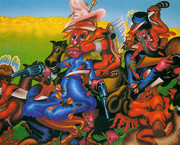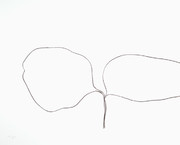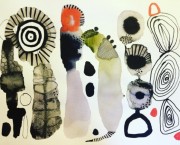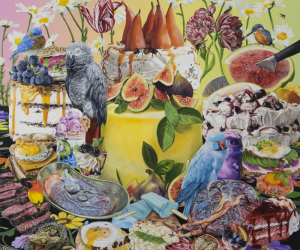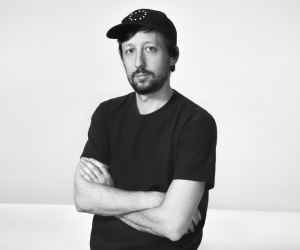
Diana Cooper
Posted by Fabio 23 July 2010
Diana Cooper is an American artist who lives and works in New York City.
“I grew up in an artistic household and frankly can’t remember a time when I didn’t have some sort of drawing tool in my hand. But until my late teens, dance and choreography were my preferred forms of expression. As dance and choreography faded in my life (due to injuries) the visual arts began to take center stage.
I spent many years struggling as a painter and it really was not until 1994 that I felt I was beginning to make work that was truly my own. Only recently have I begun to see that my early interest in dance, music and choreography foreshadowed my current interest in creating visual hybrids of drawing, painting, sculpture, and installation that are experiential in nature.
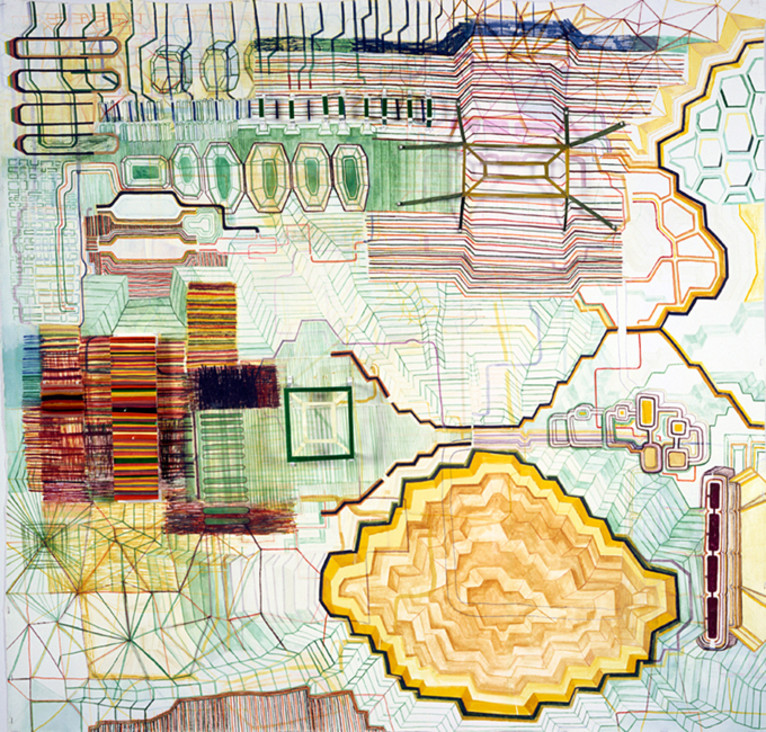 Punctuated Equilibrium, 2000, ink, acrylic, felt tip markers, pipe cleaners, paper on canvas, 56×57.5×2 inches
Punctuated Equilibrium, 2000, ink, acrylic, felt tip markers, pipe cleaners, paper on canvas, 56×57.5×2 inches
It was drawing, or I should say “doodling,” that facilitated the transition from an impersonal to a more personal form of expression. For me, doodling is simultaneously a process and an image. Doodling is a visual way of thinking or of tracing one’s thoughts. Artistically, I feel I am still reaping the benefits of that discovery.
Until 1994 I was leading a double life, painting in the studio and doodling at home. By 1995 I abandoned paint entirely and began working with Sharpie markers, working directly on the wall. In fact I covered every inch of every wall in my large Hunter studio, creating an all-encompassing, claustrophobic world that operated on a micro and macro levels. It was my first attempt to develop a new vocabulary for myself.
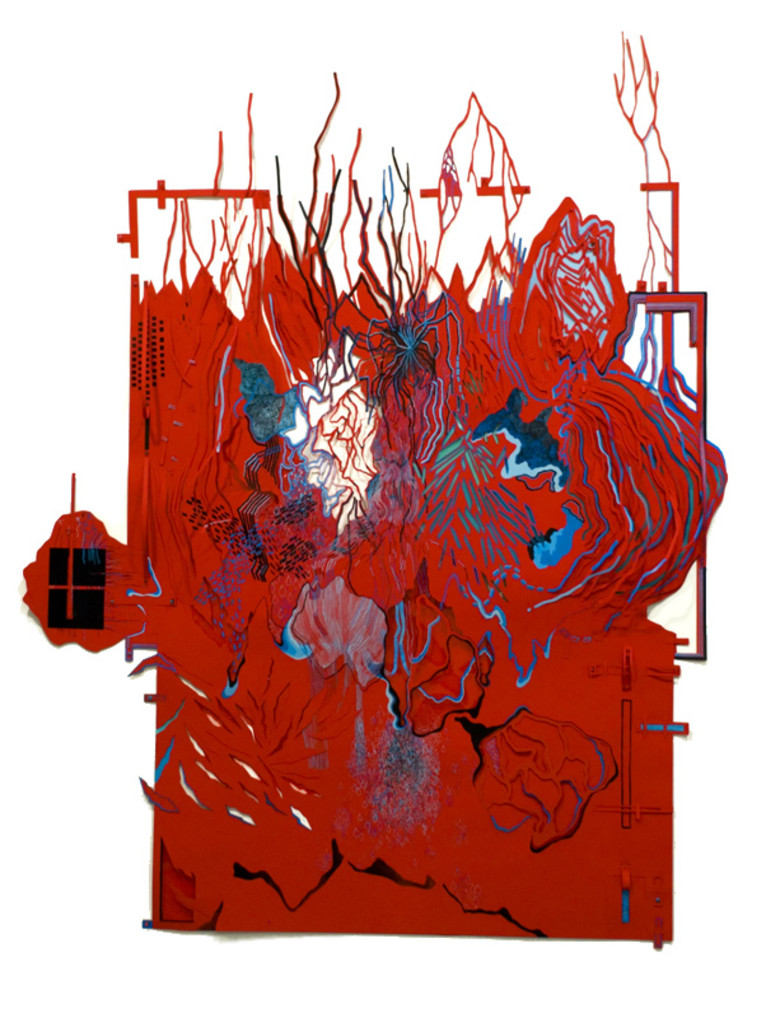 Litmus, 2008, paper, vynil, map pins, acrylic, ink, and velour paper, 69 x 55 inches
Litmus, 2008, paper, vynil, map pins, acrylic, ink, and velour paper, 69 x 55 inches
Like many artists, I want to translate into abstract visual language my thoughts, experiences, and emotions. Some concern the inner workings of the mind – the impulses to play, to invent, and to change. Others have to do with systems and patterns that possess an endless labyrinthine complexity – for example, the visual display of quantitative information. In recent years I have been attracted to graphing devices ranging from the eighteenth-century French Encyclopedia to the recent IBM History Flow Project, which maps the creation of Wiki pages on the Internet. Because doodling is, I think, an expression of the unconscious, it sometimes captures inner connections and becomes, in its way, a system. Conversely, we might think of some of the graphic systems we are familiar with as society’s unconscious doodling.
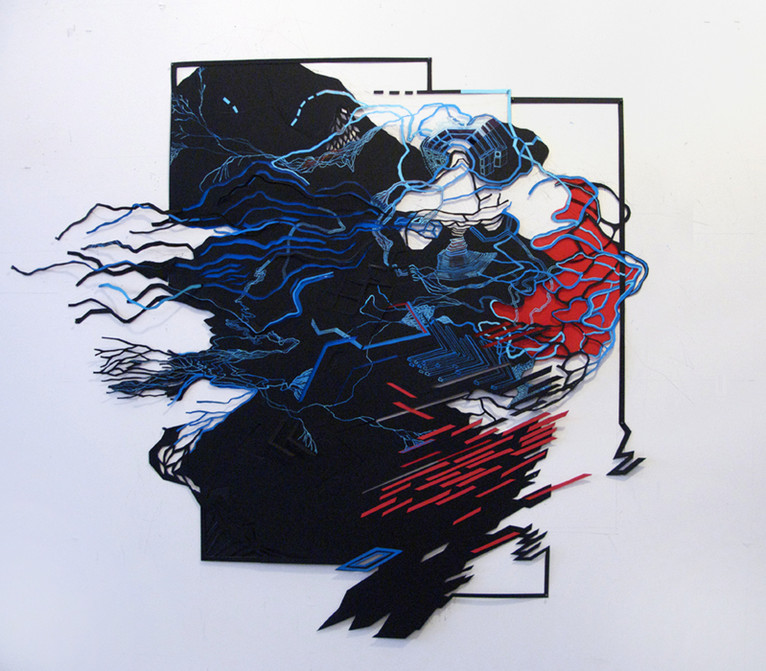 Ratite, 2008, paper, vynil, map pins, acrylic, ink, and velour paper, 43x47x1 inches
Ratite, 2008, paper, vynil, map pins, acrylic, ink, and velour paper, 43x47x1 inches
Much of the experimentation and improvisation that I do involves mediating between different forms and materials. I often juxtapose materials that evoke a sense of the absurd. I have used scotch tape, foamcore, pipecleaners, pom-poms – anything that might stop viewers in their tracks and make them think about fragility, the relation of form to material and the connection between animate and inanimate objects. This sometimes means that I try to do things visual art is not commonly thought capable of doing – for example, of evoking non-visual sensory reactions. My 2003-7 piece “Swarm” implies an almost dance-like movement in the natural world, and I think of the central spider-like form in “Orange Alert UK” (2003-8) as the visual equivalent of a piercing alarm.
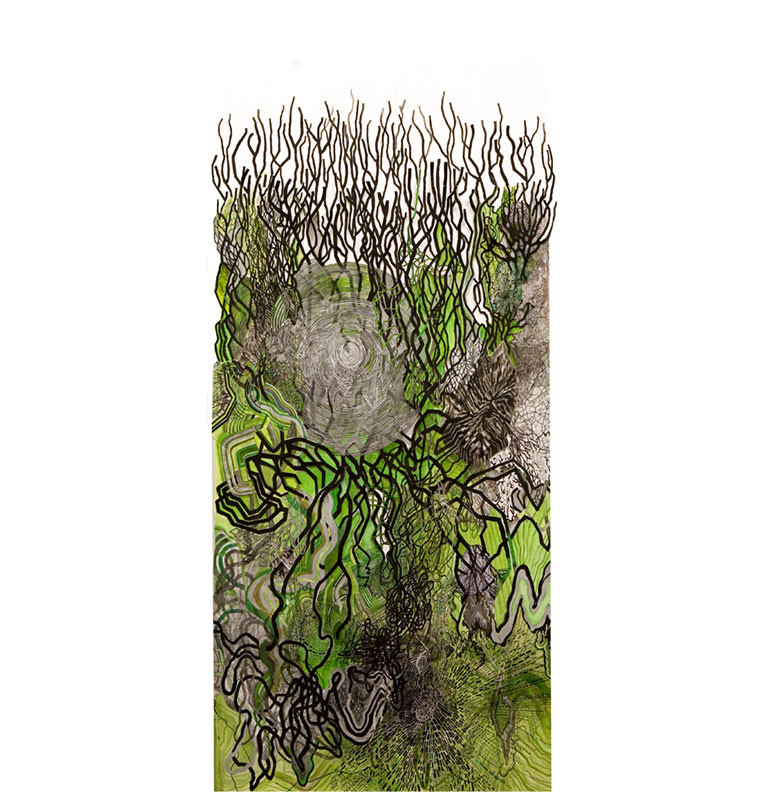 Daphne, 2006, Mixed media on paper, 73 x 31 x 1 inch
Daphne, 2006, Mixed media on paper, 73 x 31 x 1 inch
I am increasingly attracted to photography, which I’ve been using over many years to create a kind of sketchbook of abstract forms taken from the urban and technological environment we now inhabit. Close-ups of the painted lines on airport tarmacs, subway seats, and construction fencing are some of the things I am drawn to. Seen properly, these things have more strangeness and beauty than we think when we rush by them. By presenting them out of context and away from natural forms, these photos seem to re-enchant a seemingly hard and standardized world. I believe what one student wrote on a wall during the 1968 Paris demonstrations, “underneath the pavement – the beach.”

